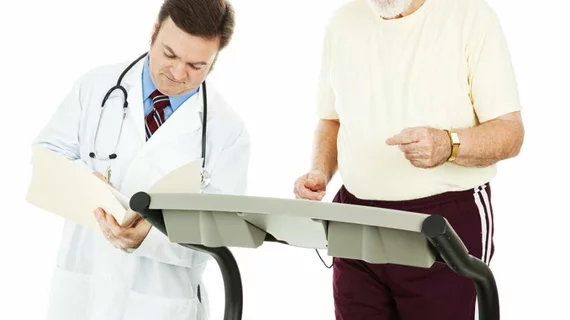6-minute walk test predicts cognitive problems after heart surgery
Each 50-meter increase in a six-minute walk test was associated with 20 percent lower odds of developing cognitive dysfunction after cardiac surgery, according to a single-center study from Japan published in The Annals of Thoracic Surgery.
“This study indicates that the easy and inexpensive six-minute walk distance (6MWD) is a valuable assessment for identifying patients at a high risk for POCD (postoperative cognitive dysfunction),” lead author Kazuhiro Hayashi, PT, MSc, said in a press release. “If we are able to identify patients who are at risk for POCD, we can provide early treatment and encourage them to better understand the dysfunction.”
Hayashi and colleagues studied 181 patients—aged 71.4 on average—who underwent non-emergency heart surgery between March 2014 and August 2015 at Nagoya University Hospital. Upon admission for their operations, each patient was asked to cover as much ground as possible on a six-minute walking assessment.
A low walking distance was independently associated with POCD, which occurred in 28 percent of the cohort. Those who developed POCD covered a median distance of 400 meters, while those who didn’t have POCD traveled a median of 450 meters. POCD was defined as a drop of at least two points on a patient’s Mini-Mental State Examination score.
“It is increasingly recognized that a patient’s fitness level has an impact on how well he/she does after a surgical procedure,” said Rakesh C. Arora, MD, PhD, of St. Boniface Hospital in Winnipeg, Canada, who wasn’t involved in the study. “This study further highlights the need for the health care team to undertake a more detailed assessment of patients’ physical fitness before the operation. The 6MWD is an important component of this evaluation.”
Arora said the identification of a patient at risk for POCD could help inform decisions regarding anesthesia, medications and discharge planning. He and Hayashi agreed “prehabilitation” could be one solution to boost postoperative recovery.
In this scenario, a patient would receive supervised exercise, educational training and social support before the procedure to improve their preparation.

